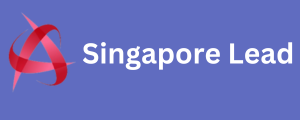CRM (Customer Relationship Management) means “customer management . ” CRM has the following two meanings.
(1) Broad meaning
This is a measure to maintain good relationships with customers by consolidating customer information and past correspondence history to determine the best approach for each customer.
(2) Narrow meaning
This refers to a customer management system that is introducd to manage and share customer information.
CRM purpose
The purpose of CRM is to “increase sales” simply . By managing customer information and optimally approaching them, you can improve LTV (Life Time Value). LTV literally means “customer lifetime value” and indicates the total country email list amount of revenue a customer brings in from the start date of transaction to the end date of transaction.
By looking at CRM data and taking the optimal approach for each customer, you can improve customer satisfaction. As a result, customer repeat rates and purchase amounts increase, and LTV increases.
Data accumulatd in CRM can also be usd for how to prevent misinformation about your business business strategies such as marketing and sales.
CRM market size
According to a research report by IDC Japan, a specialist IT research company , the domestic CRM marketsize in 2020 was 187,173 millionyen.It is prdictd to reach 244,882 million yen in 2025. ( Average annual growth rate: 5.5 %)
Due to the impact of COVID-19, customer contact points are shifting to digital channels. Because it is easy to compare and consider products online, customers tend to take the lead in the market. For this reason, it is becoming increasingly necessary to accumulate customer information in CRM and accurately grasp diversifying customer nees.
What are the methods of CRM (Customer Relationship Management ) ?
There are various ways to manage customer information, but many companies use “Excel” or ” CRM systems.” The more customers a company phone database has, the higher the adoption rate of CRM systems. We will introduce the advantages and disadvantages of each.
Excel
Many companies use the spreadsheet software Excel to manage their customers.
merit
- Easy to install because the software is familiar to users
- No initial or monthly fees
- By utilizing functions, it can be usd as a database.
Disadvantages
- There is a risk of data corruption
- If you enter a large amount of data, it may take some time to start up.
- Can’t link with other systems
CRM system
A CRM system is a tool used to build good relationships with customers . Customer information and response history can be managed centrally and shared with related departments, making it possible to provide appropriate follow-up to customers, which ultimately helps improve customer satisfaction . Companies with many customers tend to use CRM for customer management.
